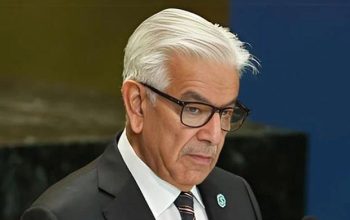In a shocking revelation, it has been disclosed that inefficient captive power plants (CPPs) in Pakistan have been absorbing a significant portion of subsidies, contributing to the growing subsidy burden in the power sector. Experts in the power sector point out that these CPPs are supplied with cheaper indigenous gas, while they continue to use more expensive Liquified Natural Gas (LNG) and other fuels, leading to higher subsidies.
The Secretary of Energy, Rashid Mahmood Langrial, recently shed light on this matter. He explained that customers of Faisalabad Electric Supply Company (FESCO), Lahore Electric Supply Company (LESCO), and Islamabad Electric Supply Company (IESCO) are effectively subsidising the entire power sector within the service areas of these distribution companies (XWDISCOS).
Conversely, the highest subsidy, amounting to Rs170 billion, is being provided to customers within the K-Electric (KE) serviced territory. This subsidy is primarily due to the use of expensive RLNG (regassified liquefied natural gas) supply from G2G level contracts with Qatar and spot purchases by Pakistan State Oil (PSO) and Pakistan LNG Limited (PLL).
The crucial point of contention is that cheaper indigenous gas is supplied to privately held, inefficient captive and export-oriented units. This has raised concerns about the distribution of subsidies in the power sector.
Secretary of Energy (Power Division), Rashid Langrial, took to X (previously known as Twitter) to share that the net required subsidy from Pakistan in its entirety is Rs327 billion.
These subsidies, funded by the government of Pakistan, are critical for maintaining a uniform tariff policy across the nation. This ensures that electricity rates remain relatively consistent for different categories of consumers under the government’s tariff regulations.
FESCO, LESCO, and IESCO jointly contribute Rs156 billion towards the government’s subsidy policy, while the remaining XWDISCOS, including Quetta Electric Supply Company (QESCO), Sukkur Electric Power Company (SEPCO), Hyderabad Electric Supply Company (HESCO), Multan Electric Power Company (MEPCO), Gujranwala Electric Power Company (GEPCO), Peshawar Electric Power Company (PESCO), and Tribal Electric Supply Company (TESCO), consume a total of Rs314 billion in subsidies. This is despite these companies having access to more cost-effective options in the national energy mix.
In contrast, KE, a privately controlled utility, receives a budgeted subsidy of Rs169 billion from the government. The main reason for this subsidy is the supply of imported RLNG to KE, which generates its own power and also receives up to 1000MW of power from the government through National Transmission & Despatch Company (NTDC).
The arrangement of supplying RLNG to KE allows the government to sell the expensive RLNG it procures through G2G agreements and spot purchases via PSO and PLL. However, if the government supplied the more economical indigenous gas of 276mmcfd to KE, as per the Economic Coordination Committee’s 2008 decision, this subsidy could potentially be reduced to zero.
Supplying RLNG to KE has enabled the government to divert cheaper indigenous gas to inefficient captive and export-oriented private units. It’s also important to note that KE doesn’t receive any operational subsidies, unlike other loss-making DISCOS. The company is managed by a privately held consortium of investors primarily from Saudi Arabia and Kuwait, among others.
As of June 2024, Pakistan’s combined circular debt has reached a staggering Rs2.31 trillion. The Ministry of Energy has recently proposed a plan to reduce the circular debt in the power sector through a combination of budget subsidies, policy and agreement revisions. The draft plan has been shared with a committee of the Special Investment Facilitation Council (SIFC), a civil-military forum, and further refinement is expected in consultation with the Ministry of Finance, according to government sources.
Published in The Express Tribune, October 26th, 2023.
Like Business on Facebook, follow @TribuneBiz on Twitter to stay informed and join in the conversation.
Read the full story at the express tribune website.


